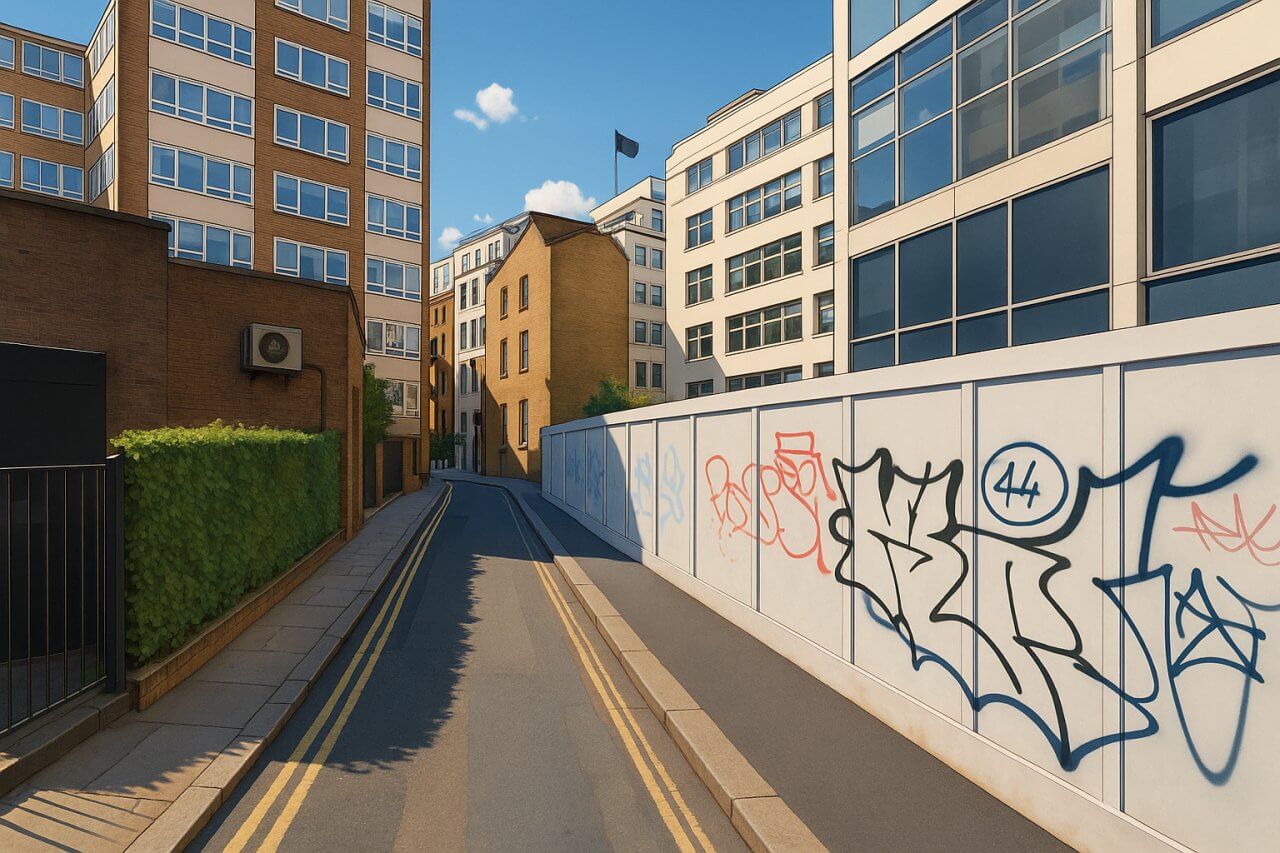
Bruton Lane, London
Bruton Lane is a narrow, characterful lane tucked between Berkeley Square and Bruton Street, in the heart of Mayfair, City of Westminster. Though easily missed, this winding lane offers a glimpse into the quieter, tucked-away corners of central London, where discreet entrances and elegant façades hint at high-end establishments and hidden history.
Street Layout and Traffic
Bruton Lane spans only about 170 metres (roughly 560 feet) in length. It begins at Berkeley Square, where it allows for two-way traffic at the junction. However, the lane quickly narrows as it winds eastward towards Bruton Street, becoming a single-lane, one-way road in that final stretch. The direction of travel is eastbound, with traffic exiting onto Bruton Street. This narrowing and winding configuration lends the lane an intimate, almost alley-like atmosphere.
Historical Background
Bruton Lane, like many streets in Westminster, takes its name from a place outside London. It was named after the town of Bruton in Somerset, a connection it shares with the adjacent Bruton Street. The name was likely chosen in the early 18th century when the area was being developed for residential and aristocratic use. The street name is pronounced “BROO-tən”, and is transcribed in the International Phonetic Alphabet as /ˈbruːtən/  .
.
Character and Atmosphere
Bruton Lane is a quintessential back lane in Mayfair—quiet, narrow, and discrete. It feels worlds apart from the bustle of nearby shopping areas, catering instead to private clubs, art galleries, and service entrances of upscale establishments. The lane’s subtle charm lies in its reserved nature. Architectural styles vary along its short length, with a mix of plain brick facades and modernized commercial premises. Some buildings serve as delivery points or rear accesses for properties fronting more prominent streets.
Surrounding Streets and Landmarks
Bruton Lane is situated between two iconic streets: the verdant and historic Berkeley Square, known for its mature London plane trees and luxury townhouses, and Bruton Street, famous for being the birthplace of Queen Elizabeth II. The lane also lies within a short walk of Bond Street, making it an integral part of the broader West End landscape. Just a stone’s throw away are high-end boutiques, Michelin-starred restaurants, and exclusive private clubs.
Real Estate and Property Values
As part of Mayfair, Bruton Lane shares in the area’s prestige. Although the lane itself is not residential in the traditional sense, properties used for commercial or mixed purposes command high prices due to their proximity to luxury zones. As of early 2025, nearby commercial spaces and converted apartments in Mayfair typically cost around £2,500 to £4,000 per square foot (£26,910 to £43,055 per sq m), depending on fittings and visibility. Units directly on Bruton Lane may be slightly lower due to their quieter positioning, but they benefit from discretion and centrality.
Points of Interest
While the lane itself hosts mostly service entrances and small business offices, it is within easy reach of numerous attractions:
- Berkeley Square: One of London’s most elegant garden squares, home to the Lansdowne Club and fine examples of Georgian architecture.
- Royal Institution of Great Britain: Located nearby on Albemarle Street.
- Shepherd Market: A historic enclave with pubs, restaurants, and boutique shops.
- Galleries: Several contemporary art galleries have discrete entrances in the vicinity of Bruton Lane.
Nearest London Underground Stations
Bruton Lane is well-served by nearby London Underground stations. The closest ones are:
- Green Park Station – served by the Jubilee Line, Piccadilly Line, and Victoria Line.
- Bond Street Station – on the Central Line and Jubilee Line.
- Oxford Circus Station – connects to the Bakerloo Line, Central Line, and Victoria Line.
Bus Stops
Bus stops are conveniently located on nearby streets. The closest ones are found along Piccadilly, Regent Street, and Oxford Street, offering direct routes to St James's, the City, and other parts of central London. Transport for London bus services here include routes such as 9, 14, 19, and 38.
Fun Fact
Despite its low profile, Bruton Lane has occasionally served as a filming location for scenes needing a nondescript but atmospheric London alley. Its understated elegance makes it ideal for dramatic entrances, often unnoticed by the general public.
Quick Facts
- Location: Mayfair, City of Westminster, London
- Connects: Berkeley Square to Bruton Street
- Length: Approximately 170 metres (560 feet)
- Traffic: Two-way at western end, one-way eastbound towards Bruton Street
- Pronunciation: “BROO-tən” /ˈbruːtən/
- Historical Naming: Named after Bruton, Somerset
- Character: Quiet, narrow, and winding back lane
- Nearby Attractions: Berkeley Square, Bruton Street, Shepherd Market
- Real Estate: £2,500–£4,000 per sq ft (£26,910–£43,055 per sq m) as of 2025
- Nearest Underground: Green Park, Bond Street, Oxford Circus
- Nearest Bus Stops: Located on Piccadilly, Regent Street, and Oxford Street
Map of Bruton Lane, London

Painting of Bruton Lane, London (View image in full size)